Frequently we gardeners run up against what seems to be an insurmountable obstacle in our quest to attain a beautiful and functional garden space. So it is with the dreaded sloping lot.
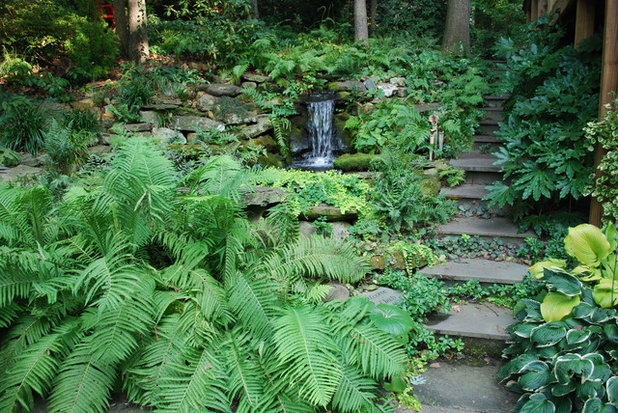
Jay Sifford Garden Design
Over the years I’ve had a turbulent relationship with my own lot that entered my life with a 30-foot drop from back to front. The working relationship was so difficult that I didn’t even own a wheelbarrow until four years ago. When I purchased my home, there was no garden; in fact, there weren’t even any front steps. My solution was to carve a tiered water feature into the side of the hill and plant a garden around it.
Let’s find a solution for your sloping yard that really works for your lifestyle, then discuss how to build a garden around it.
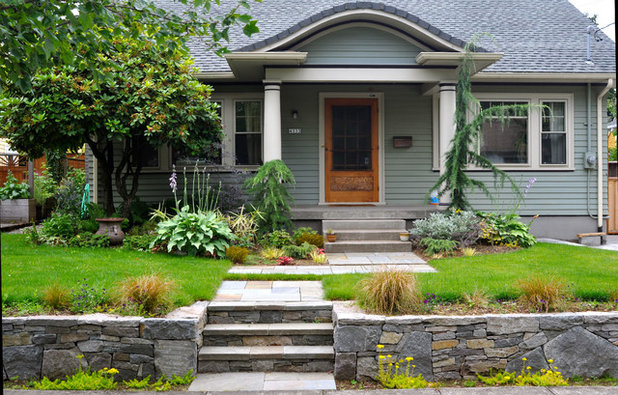
Pistils Landscape Design + Build
Taming the Slope
Build a retaining wall. A retaining wall is an obvious solution and one that makes sense if you need a level terrace for entertaining or playing sports. Its impact on the land is significant, since it involves reshaping the land.
Retaining walls are generally made of stone, timber, concrete blocks or poured concrete. A wall higher than 18 inches will likely need to be backfilled with gravel and a French drain to relieve pressure caused by water buildup. Be sure to check your local guidelines for wall height, as you may need to install a railing for safety.
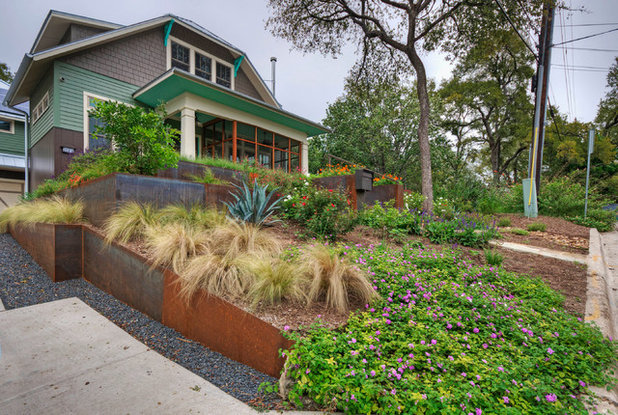
Pearson Landscape Services
Retaining walls may also be fabricated from metal such as Cor-Ten. This is generally a more expensive option, but the final product can be a stunning focal point. Be advised that metal can absorb and retain heat in full sun, so choose your plants accordingly.
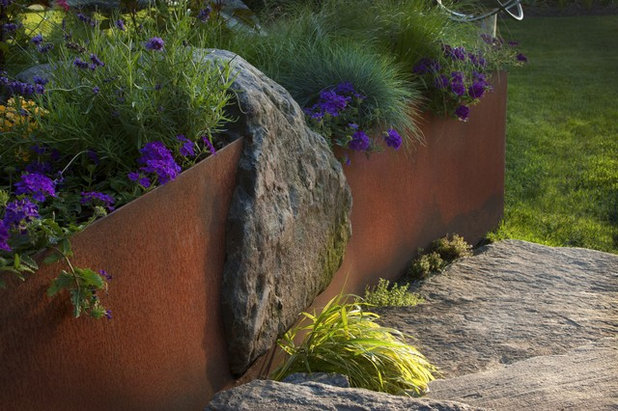
Daryl Toby - AguaFina Gardens International
A good metal fabricator can also cut stone into the wall, as shown here, for an unexpected custom look.
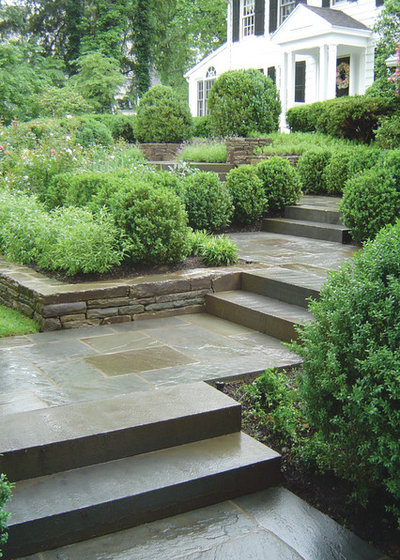
The Todd Group
Create terraced steps. Terraced steps leave a lighter footprint since they can follow the contour of the land. If they’re designed with a minimum width of 4 feet and landings between steps, the garden visitor is invited to stop and enjoy garden vignettes along the way. A staggered zigzag design, as shown here, can create a relaxed or philosophical mood for those who walk through the space, as their gait will be slowed.
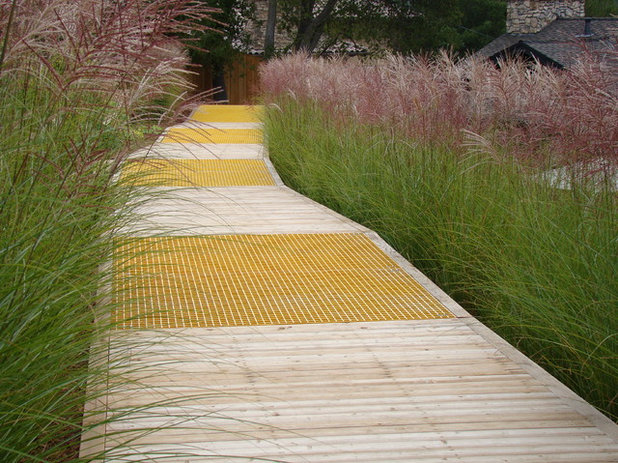
Randy Thueme Design Inc. - Landscape Architecture
Consider a boardwalk. A boardwalk creates a unique experience with little impact on the land, since it carries visitors over and through the space. Construction is similar to that of a deck. A boardwalk can spark a relaxed and adventurous experience for the garden visitor, especially when it traverses a forest or a mass planting of ornamental grasses, such as this maiden grass (
Miscanthus sp
, USDA zones 5 to 9).
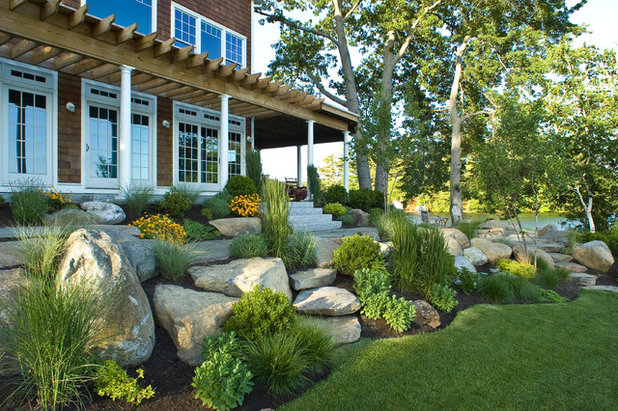
Princeton Scapes Inc
Strategically place boulders. Well-placed boulders can stabilize the grade as well as create microclimates for a variety of plants. By deliberately placing large boulders parallel to the top of the bed, you can create water-retentive planting pockets for moisture-loving plants. By placing smaller boulders perpendicular to the top of the bed, you can create well-draining areas for those plants that require those conditions. Custom soil mixes that retain or release water can further aid you in the creation of a unique mixed bed.
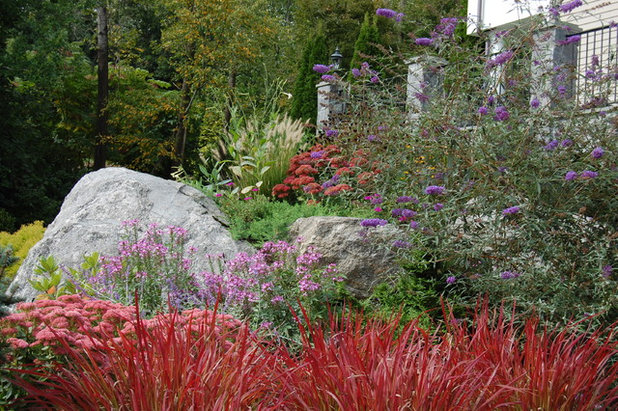
Mary-Liz Campbell Landscape Design
Designing Your Hillside GardenCreativity is in order in planting a garden on a slope. If your garden is contemporary, with clean lines, a block planting of a single species or cultivar may be in order. If your aesthetic is traditional, you may opt for a design emphasizing green foliage or white flowers. The rest of you can dare to mix things up and have some fun.
When designing a garden on a slope, I find it helpful to stand at the bottom of the space and imagine myself conducting a symphony orchestra. A musical score may very well have crescendos, high notes, low notes, prominent and feisty movements and slow, understated movements. Translate this image into your plant design by crafting a blend of plants high and low in size, loud and subtle in color and texture, plants that move at the slightest breeze and those that don’t. The juxtaposition will add another layer of interest to your garden.
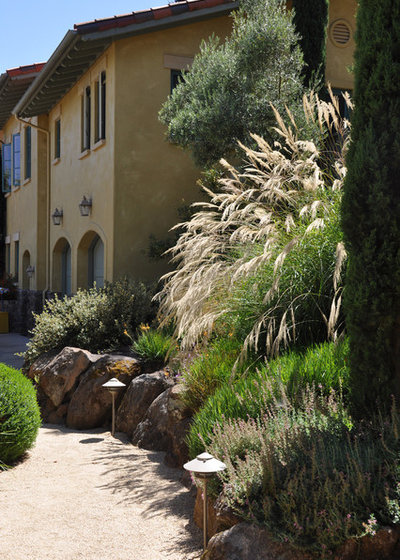
Arterra Landscape Architects
Mimic the shape of your wall. If your sloping garden contains a long, narrow stone wall, consider using low, creeping plants like Japanese garden juniper (
Juniperus procumbens ‘Nana’
, zones 4 to 9). If you are working with a slope held back by boulders, consider mounding or spiky plants that mimic the shape of your stones.
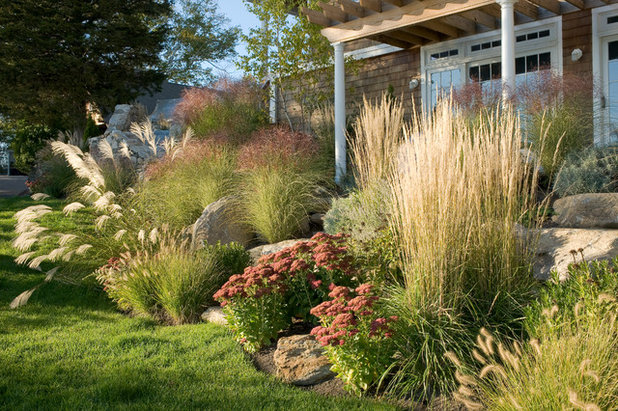
Princeton Scapes Inc
Employ grasses and succulents. Grasses and succulents are good choices for sloping gardens, since they thrive in dry, well-drained conditions. Notice how the plants in this garden add depth and texture to the space. Pay attention to small details by adding creeping ground covers such as Angelina stonecrop (
Sedum rupestre ‘Angelina’
, zones 5 to 8) or cheddar pinks (
Dianthus cvs
, zones 3 to 8) to garden crevices.
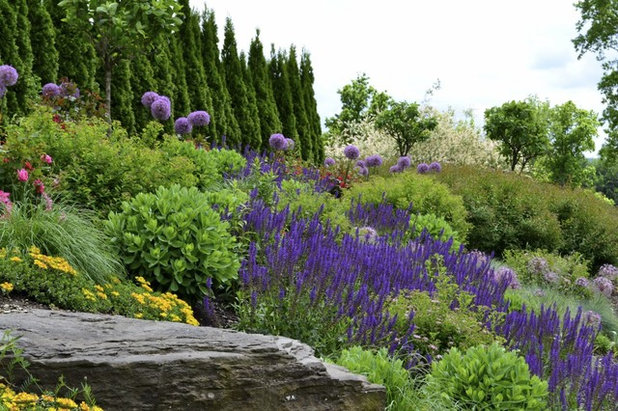
Pennsylvania Landscape & Nursery Association
Think Mediterranean. Many plants of Mediterranean origin make perfect candidates for growing on sunny, dry, rocky slopes. Rosemary
(Rosemary officinalis, zones 8 to 10), lavender (
Lavendula spp
, zones 5 to 9) and sage (
salvia spp and cvs
, zones 5 to 9) are all good choices.
More: Inspired Designs for Sloped Lots





